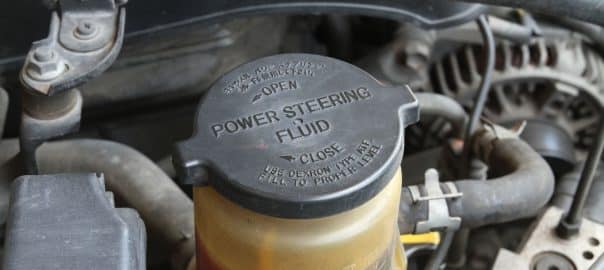Steering should feel smooth and light. If it feels stiff, makes whining noises, or leaks fluid, your power steering pump is probably failing. Safe driving requires a good steering system, and the solution? A professional power steering pump replacement.
Many drivers delay repairs, thinking issues are minor or can wait. Doing this damages connected parts, like hoses or the steering rack, and will make repairs more expensive. By learning the replacement process, you can see why early repairs matter for safe, reliable steering.
At The Power Steering Shop, we handle these steering issues every day. Our technicians repair and test power steering pumps to restore smooth handling. Inspecting the pump’s function highlights the importance of timely replacement for safety and reliability.
Power Steering Pump as a Key to Vehicle Performance
The power steering pump is a crucial component of the hydraulic system that enables smooth, responsive steering. It uses hydraulic pressure, allowing drivers to turn the wheel easily, especially at low speeds. Without it, steering would require much more effort.
A working pump keeps steady hydraulic pressure, pushing steering fluid through the system. This pressure helps the driver keep control, particularly during turns or parking. When the pump wears out, both steering and safety are at risk.
A failing pump reduces fluid pressure, making the wheel feel heavy or slow, which, over time, can put strain on other components and require further repairs.
Steer Smarter: Pros of Power Steering Pump Replacement
When a power steering pump fails, the impact goes beyond stiffness or noise. It strains the system, endangers safety, and affects both the driver and the vehicle. Replacing it promptly restores balance, reliability, and confidence behind the wheel.
A power steering pump replacement restores consistent hydraulic pressure throughout the system.This steady pressure maintains accurate steering response, particularly when manoeuvring in tight spaces or driving at higher speeds. It also prevents extra stress on essential components, helping the steering system stay efficient and safe for longer.
Replacing a worn pump provides several important advantages that go beyond comfort alone:
- Consistent hydraulic pressure. It maintains smooth, even steering effort, reducing the risk of sudden stiffness or delayed response while driving.
- Improved handling. It keeps the vehicle predictable through corners, turns, and parking, allowing better control in both city and highway conditions.
- Reduced strain on other components. It reduces the load on the steering rack, hoses, and seals, preventing related failures that can lead to higher repair costs.
- Enhanced safety . It ensures precise steering control during sudden manoeuvres or emergency situations, helping the driver respond confidently.
- Extended system lifespan. Protects parts from early wear or other issues.
When Replacement Is Necessary?
Recognising the right time for power steering pump replacement is key to avoiding further damage. There are several clear signs that the pump is failing, and knowing them helps drivers take early action.
These are common symptoms of a failing power steering pump. NZ drivers should pay attention to:
- Whining or squealing noises. This often happens when turning the steering wheel and indicates the pump is low on fluid or beginning to wear internally.
- Increased effort when steering. A heavier steering wheel is one of the most noticeable symptoms and signifies that the pump is no longer maintaining proper hydraulic pressure.
- Fluid leaks near the engine bay or underneath the vehicle. Leaking power steering fluid can signal damage to the pump seals or hoses.
- Steering that jerks or feels inconsistent. Air in the system or fluid contamination can interrupt smooth pressure delivery.
By addressing these wear signs early, vehicle owners can avoid further stress on their steering rack or column and prevent unexpected breakdowns.
What Happens During a Professional Power Steering Pump Replacement?
Drivers wonder what to expect from a power steering pump replacement when they bring their vehicle in. The process involves several important steps that ensure the system functions properly once complete.
At The Power Steering Shop, we use a structured approach that maintains both safety and reliability. Each step ensures that once the vehicle leaves our shop, the steering feels light, responsive, and safe.
- Initial inspection and diagnosis. The first step involves checking for leaks, fluid condition, and any other signs of wear. We confirm that the pump is the real cause of the issue before recommending replacement.
- Draining and cleaning the system. Old fluid is removed, and the system is flushed to clear out any debris or contaminants that could damage the new pump.
- Removing the old pump. The faulty unit is disconnected carefully from the hoses and mounting brackets.
- Installing the new or reconditioned pump. Depending on the customer’s preference and vehicle model, a new or reconditioned pump is fitted to match manufacturer standards.
- Refilling and bleeding the system. Fresh steering fluid is added, and air is removed from the system to ensure smooth operation.
- Testing and quality check. We run pressure tests and turn the steering through its full range to confirm correct installation and performance.
Timing It Right: How Long Does the Replacement Job Take?
Many vehicle owners worry about how long a replacement might take. In most cases, the process is completed within a few hours. However, the duration depends on several factors, such as the type of vehicle, the pump design, and the accessibility of components.
Cars with compact engine bays often take slightly longer because the pump is harder to reach. Larger vehicles may also require more time due to additional parts involved in the steering system.
After installation, we test the entire system to confirm smooth steering and pressure balance. This final step is essential before returning the vehicle to the customer.
Counting the Costs: What Affects the Price of Power Steering Pump Replacement?
The cost of power steering pump replacement can vary depending on the vehicle make and model, pump type, and labour involved.
Here are several elements that influence the total expense:
- Pump type. Choosing between a new and a reconditioned pump affects the price. Reconditioned pumps often cost less but still provide dependable performance.
- Labour time. Vehicles with difficult access points require more labour hours.
- Additional repairs. Sometimes, hoses, reservoirs, or seals may need replacement due to leaks or wear.
- Fluid quality. Using the correct steering fluid type ensures proper operation and prevents early failure.
At The Power Steering Shop, we provide clear, upfront quotes so our customers understand what they are paying for. We believe transparency builds trust, and we explain each cost component before starting any work.
When Is the Right Time to Replace Your Steering Pump?
Waiting too long raises repair costs. The best time to replace your pump is at the first sign of trouble. Many drivers ignore noises or stiffness, but these are actually early warning signs.
Regular inspections help pinpoint problems before they escalate. We recommend having the steering system serviced at least once a year, or whenever fluid changes are due. This habit ensures the pump remains in good working order and reduces the risk of unexpected failure.
Keeping It Running: How to Maintain a New Power Steering Pump?
After a successful power steering pump replacement, keeping the system in good condition allows it to continually function for years to come. Maintenance doesn’t require major effort, but small checks go a long way in deterring future issues.
Here are practical tips for maintaining your new pump:
- Check fluid levels regularly. Low fluid can cause the pump to run dry, leading to internal damage.
- Observe fluid colour. Steering fluid should stay clear or light pink. If it turns dark, it may contain dirt or metal particles.
- Inspect for leaks. Look under the car occasionally for signs of fluid loss.
- Schedule annual checks. Professional inspections catch minor wear before it becomes serious.
- Use only the recommended fluid. The wrong type can reduce pump efficiency and cause seal failure.
Professional Power Steering Care: Why Is it a Long-Term Value for Drivers
Investing in proper steering repair doesn’t just fix a short-term issue; it protects the overall health of your vehicle. A well-maintained steering system ensures responsive handling, better control, and lower long-term maintenance costs.
By relying on specialists, drivers gain a service that extends beyond the pump itself. It includes components such as hoses, fluids, seals, and valves that enable the system to run efficiently. This complete approach prevents underlying issues from resurfacing later.
Expert Hands Make the Difference
Choosing a professional power steering specialist in NZ means the job will be done by trained technicians who understand how each part of the system interacts. Replacing a steering pump needs precision, proper tools, and knowledge of manufacturer standards.
A professional repair service ensures:
- Correct diagnosis avoiding unnecessary replacements by identifying the real problem.
- Proper fitting which prevents leaks and pressure loss caused by improper installation.
- Warranty protection which keeps vehicle warranties valid when parts and procedures meet required standards.
- Long-term reliability that reduces the risk of repeated issues and costly follow-up repairs.
The Power Steering Shop combines expertise with high-quality components to make sure every replacement meets or exceeds factory expectations. We also offer reconditioned options for those looking for a balance between performance and cost.
Steering Confidence Starts Here: How Power Steering Pump Replacement Makes a Real Difference
A power steering pump replacement is more than a technical fix. It’s a key step in keeping a vehicle predictable and safe to drive. When the pump weakens, steering becomes heavier, slower, and far less responsive, turning even short trips into an effort. Replacing the faulty unit restores proper hydraulic pressure, keeping the wheel light and accurate. This boosts both comfort and control on every drive.
This service is not only about smoother handling but also about maintaining the safety that every driver depends on. A well-functioning pump means the steering reacts immediately, whether you’re making a tight turn or avoiding a sudden obstacle. It also prevents additional strain on connected components, dodging the chance of costly repairs and accidents.
At The Power Steering Shop, we’ve seen how a timely replacement protects both drivers and vehicles in the long run. Overlooking signs of pump wear may seem harmless at first, but it can quickly lead to steering failure and reduced vehicle performance. Acting early makes the system more reliable and keeps your car easy to control. For anyone who values safety, comfort, and confident driving, a professional power steering pump replacement is not just maintenance, but an essential investment in every journey ahead.


